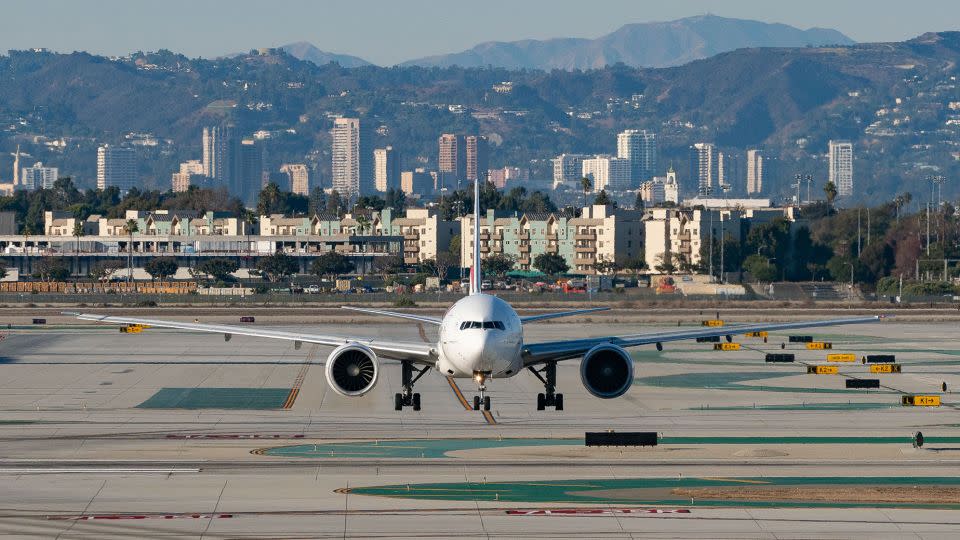Editor’s Note: The views expressed in this commentary are solely those of the author. CNN presents the work of The Conversation, a collaboration between journalists and academics to provide news analysis and commentary. The content is produced solely by The Conversation.
The summer of 2023 was of great importance for the travel industry. By the end of July, the number of international tourists worldwide reached 84% of pre-pandemic levels. In some European countries, such as France, Denmark and Ireland, tourism demand even exceeded pre-pandemic levels.
This may be great news economically, but there are concerns that a return to the status quo will have serious environmental and social consequences.
The summer saw record-breaking heat waves in many parts of the world. People were forced to flee forest fires in Greece and Hawaii, and extreme weather warnings were issued in many popular holiday destinations such as Portugal, Spain and Turkey. Experts attributed these extreme conditions to climate change.
Tourism is part of the problem. The tourism sector generates about a tenth of the greenhouse gas emissions causing the climate crisis.
The negative impacts of tourism on the environment have become so severe that some suggest drastic changes in our travel habits are inevitable. In a 2023 report analyzing the future of sustainable travel, tour operator Intrepid Travel suggested that ‘carbon passports’ will soon become a reality if the tourism industry hopes to survive.
What is a carbon passport?
The idea of a CO2 passport is based on the fact that each traveler is assigned an annual CO2 emission that he or she is not allowed to exceed. These fees can then ‘ration’ travel.
This concept may seem extreme. But the idea of personal carbon rights is not new. A similar concept (called “personal carbon trading”) was debated by the British Parliament in 2008, before being dropped due to its perceived complexity and potential for public resistance.
The average annual carbon footprint for a person in the US is 16 tons – one of the highest figures in the world. In Britain this figure is 11.7 tonnes, still more than five times the figure recommended by the Paris Agreement to keep global temperature rise below 1.5 degrees Celsius (2.7 Fahrenheit) above pre- industrial level.
Globally, the average annual carbon footprint of a person is closer to 4 tons. But to have the best chance of preventing temperatures from rising above 2 degrees Celsius, the average global carbon footprint must fall to less than two tonnes by 2050. This figure equates to approximately two return flights between London and New York.
Intrepid Travel’s report predicts that we will see carbon passports in action by 2040. However, several laws and restrictions have been introduced in the past year that suggest our travel habits may already be about to change.

Focused on air travel
Between 2013 and 2018, the amount of CO₂ emitted by commercial aircraft increased by 32% worldwide. Fuel efficiency improvements slowly reduce emissions per passenger. But research from 2014 shows that regardless of industry efforts to reduce carbon emissions, they will not be offset by air traffic growth.
For emissions reductions to have any meaningful impact, ticket prices would have to rise 1.4% every year, discouraging some people from flying. In reality, however, ticket prices have fallen.
Some European countries are starting to take measures to reduce air traffic. From April 1, 2023, passengers on short-haul flights and older aircraft in Belgium will be subject to increased taxes to encourage alternative forms of travel.
Less than two months later, France banned short-haul domestic flights where the same journey by train can be made in two and a half hours or less. Spain is expected to follow suit.
A similar plan could also be in store for Germany. In 2021, a YouGov poll found that 70% of Germans would support such measures to combat climate change if alternative transport routes such as trains or ships were available.
Cruises and carbon
It is not just air travel that is being criticized. A 2023 study by the European Federation for Transport and Environment found that cruise ships pump four times as much sulfur gases (proven to cause acid rain and various respiratory diseases) into the atmosphere as all 291 million cars in Europe combined.
Statistics like these have forced European destinations to take action against the cruise industry. In July, Amsterdam’s city council banned cruise ships from docking in the city center in an effort to reduce tourism and pollution – an initiative that has seen success elsewhere.
In 2019, Venice was the most polluted European port, due to large numbers of cruise ship visits. But it fell to 41st place in 2022 after a ban on large cruise ships entering the city’s waters reduced air pollutants from ships in Venice by 80%.


Change destinations
The Intrepid Travel report also highlights that not only the way we travel, but also where we travel will soon be affected by climate change. Higher temperatures are likely to reduce the appeal of traditional beach destinations, causing European tourists to seek cooler destinations such as Belgium, Slovenia and Poland for their summer holidays.
Several travel agencies reported a noticeable increase in holiday bookings to cooler European destinations such as Scandinavia, Ireland and the UK during the peak months of summer 2023.
Whatever the solution, changes in our travel habits seem inevitable. Destinations around the world, from Barcelona to Italy’s rivers and even Mount Everest, are already calling for limits on the number of tourists as they struggle to cope with crowds and pollution.
Holidaymakers should prepare now to change their travel habits, before this change is forced upon them.
Ross Bennett-Cook is Visiting Lecturer, School of Architecture + Cities, University of Westminster
For more CNN news and newsletters, create an account at CNN.com